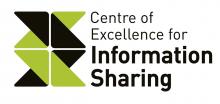The IAM form, a patient held record that can be changed, added to and enhanced as needs change, is an opportunity for patients to consider their own strengths, resources as well as their health and social care needs. This example of how local areas are working to implement overall system change forms part of our care and health improvement digital and information resource.
The challenge
Enabling patients to feel empowered and in control of their health and care information should their needs and/or circumstances change, and realise savings with an ageing population through an integrated approach.
The solution
Essex understands that the key to overcoming the barriers to information sharing is ‘to have really good projects that demonstrate the value of information sharing”. Local leaders were committed to delivering a co-design process involving patients and families and other stakeholders to collectively produce the solution. This resulted in the IAM form which is a patient held record that can be changed, added to and enhanced as needs change. It facilitates an opportunity for patients to consider their own strengths, resources as well as their health and social care needs. Being captured in a standard word document it can easily be integrated into existing clinical and social care systems.
The impact
The IAM form looks quite different to traditional clinical care plans and contains questions which are highly social as well as clinical. The IAM form has worked very well to initiate a different type of conversation with patients, for example opening discussion on difficult topics such as end of life wishes. These could include not admitting someone to hospital if they wanted to remain at home. It is described as very successful and “patients, families and professionals all loved it”.
How is your approach being sustained
It was apparent that the success of this project required ongoing engagement and buy-in from multiple parts of the care and health system. Achieving this has been key to the sustainability of the IAM form. There is now an Easy Read learning disability version, that we are looking at extending to young people and mental health, and it is now the STP approved end of life tool.
Lessons learned
Essex found their primary success factor was patient ownership of their own information and a co-design approach with patients and families supported this. Also, it is essential for leadership “to keep an eye on the ball” and maintain oversight to ensure successful developments are sustained by the whole system.

